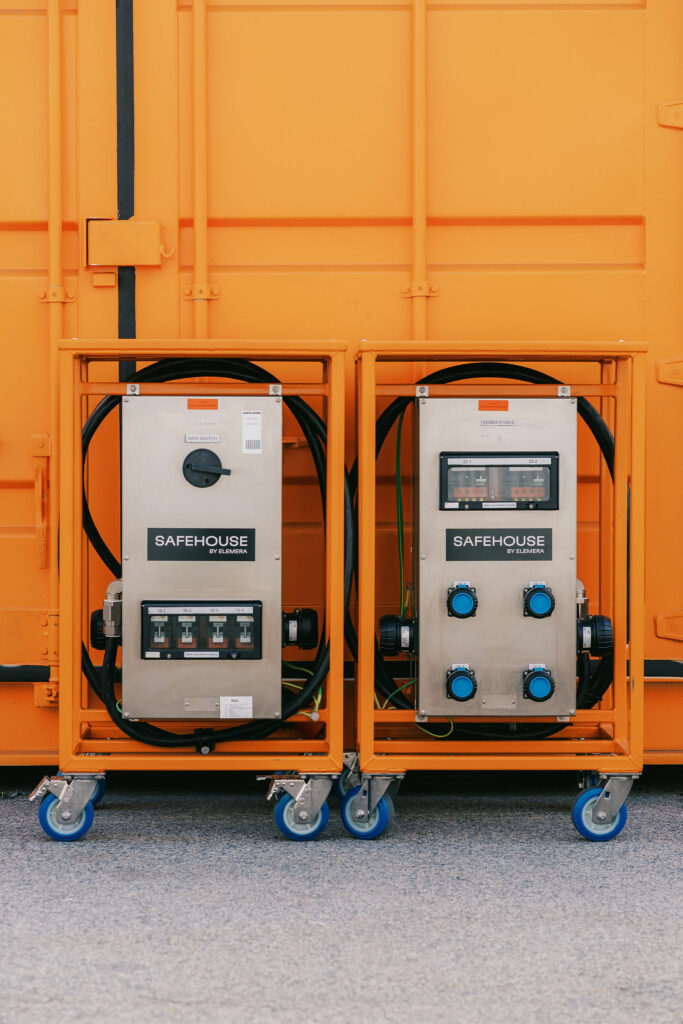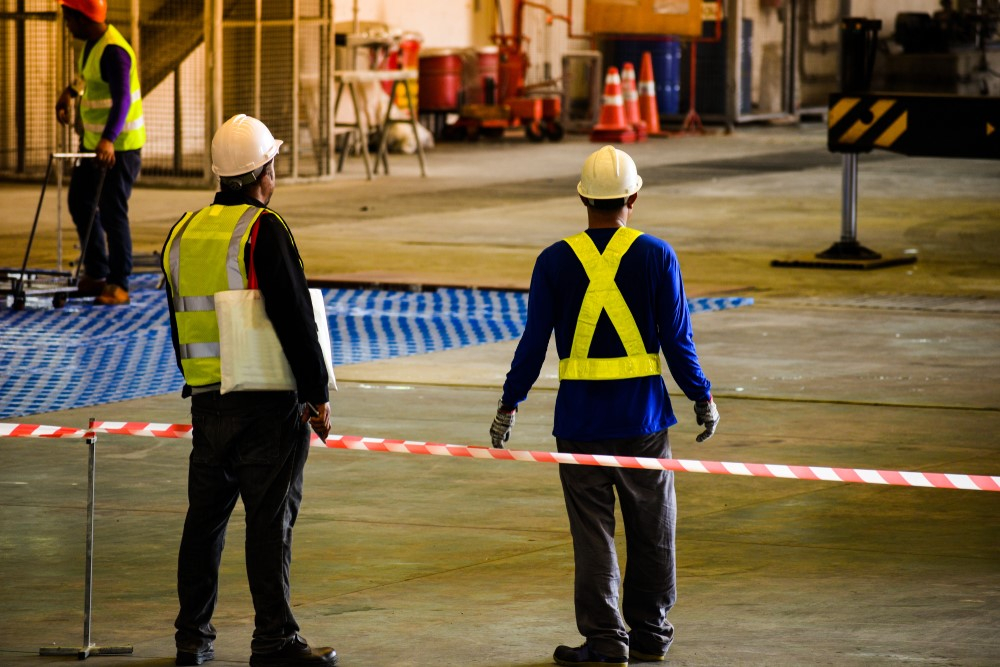Getting My Roar Solutions To Work
Getting My Roar Solutions To Work
Blog Article
How Roar Solutions can Save You Time, Stress, and Money.
Table of ContentsSome Known Incorrect Statements About Roar Solutions 7 Easy Facts About Roar Solutions ShownThe Ultimate Guide To Roar Solutions
In order to protect installations from a possible explosion a method of evaluating and identifying a possibly hazardous area is called for. The objective of this is to make sure the correct choice and setup of equipment to eventually avoid an explosion and to make sure security of life.
(https://www.4shared.com/u/m0RNXdsL/thomascarrillo4740.html)
No equipment ought to be set up where the surface area temperature of the equipment is more than the ignition temperature of the provided risk. Below are some common dirt harmful and their minimal ignition temperature level. Coal Dirt 380C 225C Polythene 420C (melts) Methyl Cellulose 420C 320C Starch 460C 435C Flour 490C 340C Sugar 490C 460C Grain Dust 510C 300C Phenolic Resin 530C > 450C Aluminium 590C > 450C PVC 700C > 450C Residue 810C 570C The possibility of the danger existing in a focus high enough to trigger an ignition will differ from location to place.
In order to categorize this threat an installation is split into locations of threat relying on the amount of time the hazardous exists. These locations are described as Areas. For gases and vapours and dirts and fibres there are 3 areas. Zone 0 Area 20 A harmful atmosphere is highly likely to be present and might be existing for long durations of time (> 1000 hours annually) or perhaps continuously Area 1 Zone 21 A hazardous ambience is feasible yet not likely to be present for long periods of time (> 10 450 C [842 F] A classification of T6 implies the minimal ignition temperature is > 85 C [185 F] Dangerous location electrical tools perhaps created for usage in higher ambient temperatures. This would certainly showed on the score plate e.g. EExe II C T3 Ta + 60C( This suggests at 60C ambient T3 will certainly not be exceeded) T1 T1, T2, T3, T4, T5, T6 T2 T2, T3, T4, T5, T6 T3 T3, T4, T5, T6 T4 T4, T5, T6 T5 T5, T6 T6 T6 A T Class rating of T1 implies the maximum surface temperature produced by the tool at 40 C is 450 C. Presuming the connected T Class and Temperature level score for the devices are appropriate for the location, you can constantly use an instrument with an extra rigid Division rating than required for the area. There isn't a clear solution to this concern. It actually does rely on the sort of tools and what repairs require to be performed. Devices with particular test treatments that can not be performed in the area in order to achieve/maintain 3rd party ranking. Need to return to the factory if it is prior to the devices's service. Field Repair By Authorised Personnel: Complicated screening might not be needed however certain procedures might need to be adhered to in order for the tools to maintain its third party ranking. Authorised employees should be utilized to carry out the job properly Repair service must be a like for like substitute. New element need to be taken into consideration as a direct substitute calling for no special testing of the devices after the fixing is complete. Each tool with a hazardous rating ought to be reviewed separately. These are outlined at a high degree listed below, yet for even more detailed information, please refer directly to the guidelines.
How Roar Solutions can Save You Time, Stress, and Money.
The equipment register is a detailed data source of devices records that includes a minimum collection of areas to recognize each item's area, technological criteria, Ex classification, age, and ecological information. This information is crucial for monitoring and handling the equipment efficiently within harmful locations. In contrast, for regular or RBI sampling assessments, the grade will be a combination of Comprehensive and Close inspections. The proportion of Thorough to Close examinations will certainly be determined by the Equipment Threat, which is analyzed based upon ignition danger (the probability of a source of ignition versus the likelihood of a flammable environment )and the unsafe area category
( Area 0, 1, or 2). This variant will additionally affect the resourcing requirements for work prep work. Once Lots are defined, you can develop tasting strategies based upon the sample dimension of each Lot, which refers to the number of arbitrary tools things to be inspected. To figure out the called for example dimension, 2 facets require to be reviewed: the dimension of the Whole lot and the group of evaluation, which suggests the level of effort that should be used( decreased, regular, or raised )to the inspection of the Whole lot. By combining the category of inspection with the Whole lot dimension, you can after that develop the appropriate being rejected standards for an example, implying the allowable variety of defective items found within that sample. For more information on this procedure, please describe the Power Institute Guidelines. The IEC 60079 typical suggests that the optimum interval between evaluations ought to not go beyond 3 years. EEHA evaluations will certainly also be carried out beyond RBI campaigns as part of scheduled maintenance and equipment overhauls or repair services. These inspections can be credited towards the RBI example sizes within the influenced Whole lots. EEHA assessments are conducted to recognize mistakes in electrical tools. A weighted scoring system is essential, as a solitary tool might have multiple faults, each with varying degrees of ignition danger. If the mixed rating of both evaluations is much less than twice the mistake score, the Great deal is deemed acceptable. If the Whole lot is still taken into consideration undesirable, it should undergo a complete assessment or justification, which might set off more stringent assessment protocols. Accepted Whole lot: The reasons of any type of faults are identified. If an usual failing mode is located, additional equipment may require evaluation and fixing. Faults are classified by severity( Security, Stability, House cleaning ), making certain that urgent problems are evaluated and resolved promptly to mitigate any type of influence on safety or procedures. The EEHA database ought to track and tape the lifecycle of faults in addition to the restorative activities taken. Executing a durable Risk-Based Examination( RBI )strategy is critical for guaranteeing compliance and safety and security in handling Electric Devices in Hazardous Locations( EEHA) (hazardous area electrical course). Automated Fault Scoring and Lifecycle Management: Easily take care of mistakes and track their lifecycle to boost evaluation precision. The introduction of this support for risk-based assessment even more enhances Inspectivity's position as a best-in-class service for additional reading regulative compliance, as well as for any type of asset-centric assessment use situation. If you want finding out extra, we welcome you to ask for a demo and uncover exactly how our remedy can transform your EEHA administration procedures.
A Biased View of Roar Solutions

In terms of explosive threat, a hazardous location is an atmosphere in which an eruptive atmosphere exists (or might be anticipated to be existing) in amounts that need unique safety measures for the construction, installment and use of equipment. eeha courses. In this write-up we discover the challenges dealt with in the work environment, the threat control actions, and the called for competencies to work securely
It issues of modern life that we produce, save or take care of a series of gases or fluids that are regarded flammable, and a series of dirts that are considered flammable. These substances can, in specific conditions, develop eruptive ambiences and these can have major and terrible repercussions. The majority of us recognize with the fire triangle eliminate any kind of among the 3 elements and the fire can not happen, but what does this mean in the context of harmful areas? When breaking this down into its most basic terms it is essentially: a mix of a specific quantity of release or leak of a specific material or product, combining with ambient oxygen, and the existence of a source of ignition.
In most circumstances, we can do little concerning the levels of oxygen in the air, however we can have substantial influence on resources of ignition, for instance electric equipment. Unsafe locations are documented on the harmful area classification illustration and are determined on-site by the triangular "EX-SPOUSE" indicator. Below, amongst other vital info, areas are split right into three kinds depending on the risk, the probability and duration that an eruptive ambience will exist; Zone 0 or 20 is regarded one of the most unsafe and Area 2 or 22 is considered the least.
Report this page